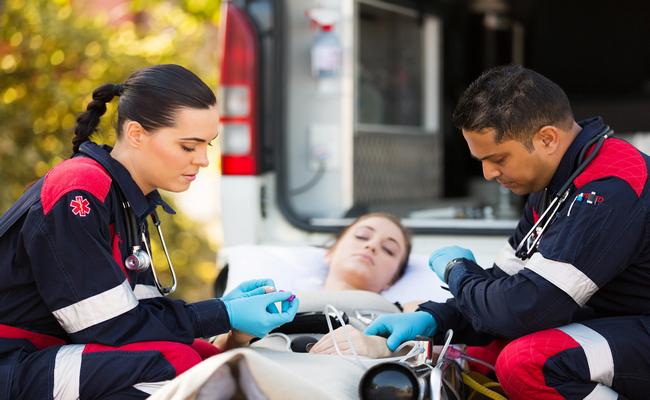Major Causes of Shock and Shock Management Guideline
Shock Definition in Medical:
Shock is a life-threatening situation that happens when the body is not getting enough blood flow. Many organs can be damaged as a result of shock. It demands immediate treatment and it worse very rapidly if it can’t get that. One out of five people who suffer shock will die from it. In another article, I have discussed different symptoms and causes of shock.

In another word, the shock is an abnormal physiological situation resulting from an inadequate proportion of blood to the aorta thus causes inadequate blood flow per-fusing the capillaries of tissues and organs.
Most Common Causes of Shock:
There are some common reasons for the shock which are listed below:
- Severe blood loss (Exceeds 2 pints),
- Loss of other body fluids like diarrhea, vomiting, bowel obstruction,
- Serious burns,
- Blood infection,
- Severe heart disease,
- Heart attack,
- Acute heart failure,
- Hypoglycemia,
- Hypothermia,
- Anaphylactic shock,
- Drug overdose,
- Spinal cord injury.
Management of Shock in Emergency Department:
All the first aid management of shock has presented in the below:
- Rest and reassure the patient.
- Keep the person warm and comfortable place.
- Loosen and tight clothing, remove belt and shoes and cover them with a blanket.
- Check and control ABCDEs: here, A stands for airway control, B stands for breathing and ventilation, C stands for circulation, D stands for disability, E stands for exposure with environmental control.
- If necessary, begin rescue breathing and CPR (Cardiac Pulmonary Resources).
- Place the person in the shock position, if the person is conscious and does not have an injury to the leg, head, neck, or spine. Have to lay the person on the back and lift the legs about 12 inches (30 centimeters). Do not elevate the head. Leave the person lying flat if raising the legs will cause pain or potential harm.
- Continue to check the rate of breathing at least every 5 minutes until help arrives even if the person can breathe on his or her own.
- Do not move that person who has a suspected or known spinal injury.
- Open an intravenous (I/V) channel in a large vein and give adequate fluid (normal saline, dextrose).
- If the casualty unconscious and in case of head injury or suspected internal bleeding do not give stimulate.
- Even if the person complains of thirst, do not give fluids by mouth. There is a choking risk in the event of abrupt loss of consciousness.
- Control bleeding by direct pressure should be applied to any wounds that are bleeding significantly.
- Provide appropriate first aid for any wounds, injuries, or illness.
- Pain should be relieved as fast as possible.
- Transport as soon as possible to the hospital.
More questions related to this article:
- What do you mean by shock?
- What is the definition of shock?
- Describe the first aid management of shock.
- How will you manage a case of shock?
- What is the first aid treatment for a shock?
- What are the common causes of shock?
- What are the treatments for a shock?
- What is shock management?
- How do you treat a patient in shock?
- Describe the nursing management of shock.

Maria Khatun Mona is a Founder and Editor of Nursing Exercise Blog. She is a Nursing and Midwifery Expert. Currently she is working as a Registered Nurse at Evercare Hospital, Dhaka, Bangladesh. She has great passion in writing different articles on Nursing and Midwifery. Mail her at “maria.mona023@gmail.com”
